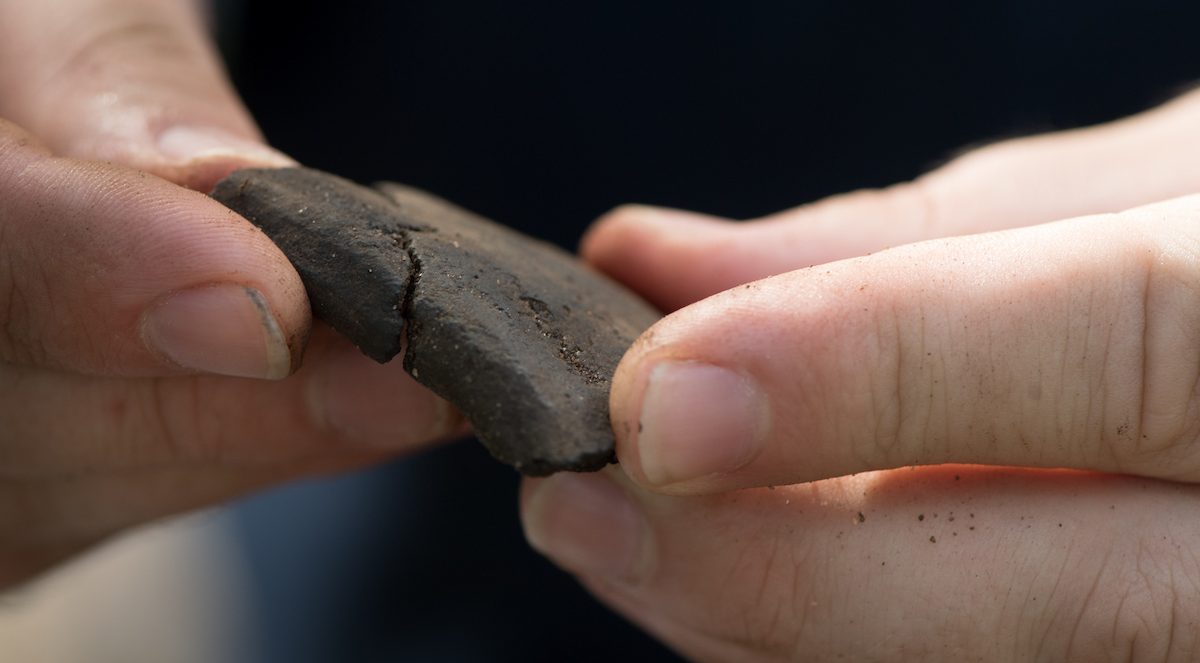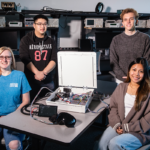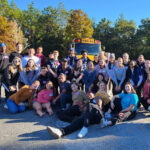Archaeologists Learning More about Pensacola’s Pre-Luna Period
Pensacola – As details of the 16th century settlement associated with explorer Don Tristán de Luna y Arellano continue to be uncovered, University of West Florida archaeologists are also learning more about the cultures that lived on Pensacola Bay before Luna arrived.

Dr. Ramie Gougeon, an associate professor of anthropology, is leading a team of undergraduate and graduate students who are excavating a shell midden in a Pensacola neighborhood. A shell midden is essentially an area where debris from people consuming shellfish has accumulated over time. In addition to the gallons of oyster shell found in the midden, fish, deer bones and sherds of pottery that date back to 1200-1300 A.D. have also been unearthed, Gougeon said.
From the artifacts, Gougeon and his students are hoping to find out more about the people who inhabited the area before the Luna colony’s arrival.
“Who was here when Luna sailed in, because we know from the accounts that they didn’t stick around, they left,” Gougeon said. “And then, if we get very lucky, we may be able to determine which native groups came back after the Luna settlement left some two years later.”
Gougeon said a captain from Spanish explorer Hernando de Soto’s expedition came to Pensacola Bay several times in the early 1540s – decades before Luna’s arrival – and talked with people who lived on the Bay. However, there are only brief historical accounts as to the nature of those interactions, Gougeon said.
“It’s hard to tell from the few accounts we have if these were hostile or friendly, but by the time Luna got here we could speculate that word had gotten out that maybe interacting with the Spaniards wasn’t the best idea,” Gougeon said. “So the Luna accounts have several references to complaints about the lack of Indians.”
The Spanish model for colonization at that time was to rely on the locals for food and other support until the colony was established, Gougeon said. Going against the model, Luna intended for his settlement to be more self-reliant, but the hurricane changed those plans. Once his fleet and supplies were sunk, he had to turn to the local population for help.
“And that critical part of the puzzle was not here (for Luna), because (the locals) left,” he said.
Shell middens, such as the one Gougeon and his students are working on during the terrestrial field school this summer, can shed light on the diet of the cultures that existed before Luna.
The Spanish colonists may have had religious or cultural dietary restrictions that prevented them from seeing some of the resources available to them as food, Gougeon said.
“And they faced a lot of hardships,” he said. “It’s all through the documents about how their rations were being cut, and how they were constantly sending out parties to find food when they may have been sitting right on top of it.”
The pieces of pottery unearthed from the shell midden will allow Gougeon and his students to reconstruct possibly up to a half of a whole pot, which can tell them about the shape of the vessel and what type of foods they were cooking in it.
“I think the whole context of it is really exciting, because what we’re finding are sherds that date to a very particular time period, the late Woodland period,” said Hillary Jolly, a graduate student who is serving as one of the field directors at the site. “But we’re also finding some other pottery that dates to a later time period. What that tells us is that this midden spans a transitional period in time when these cultures are changing over the course of a couple hundred years.”
While learning more about the pre-Luna cultures that inhabited the Bay, students are also gaining important skills that will help them in the future, Gougeon said.
“The undergraduates are taking this class to learn the different field techniques, learn how to conduct a survey, how to do a testing project, get those hands on skills that they need, that they can then go get a job with,” he said. “The graduate students are learning how to supervise students as well as how to run a project.”



